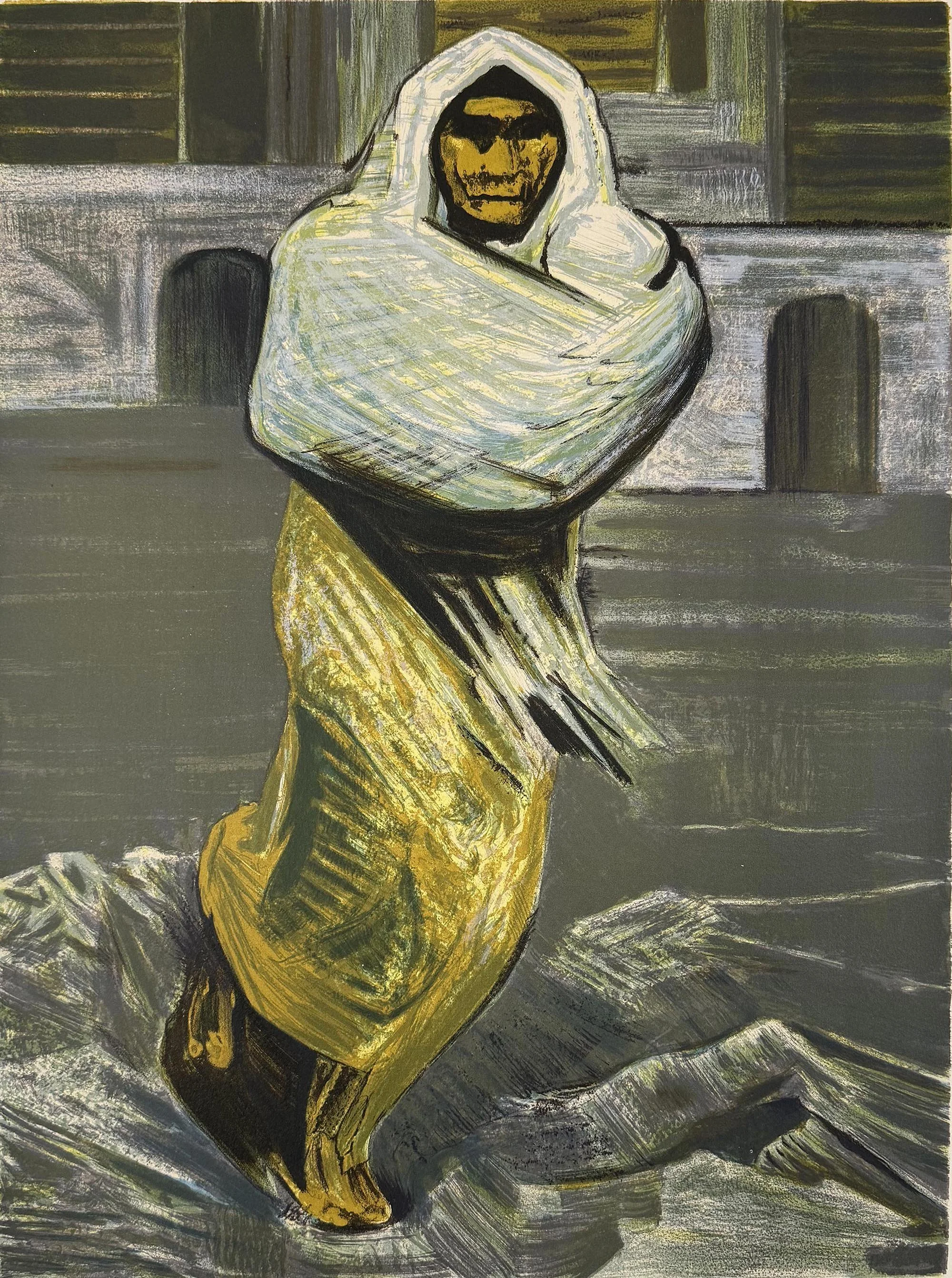David Alfaro Siqueiros - Prints and Biography
David Alfaro Siqueiros
David Alfaro Siqueiros (1896–1974) stands as one of the towering figures of twentieth-century Mexican art, renowned as both a revolutionary painter and a master printmaker. Alongside Diego Rivera and José Clemente Orozco, he formed the celebrated triumvirate of Mexican Muralists whose public works transformed walls into vehicles for social and political commentary. Yet beyond his monumental frescoes, Siqueiros also made a lasting contribution to the art of printmaking, producing powerful lithographs, etchings, and mixed-technique works that distilled the urgency of his vision into intimate, reproducible form.
Siqueiros viewed printmaking not merely as an auxiliary practice but as an extension of his broader mission: to make art accessible to the people and to give visual form to the struggles of workers, peasants, and the oppressed. His prints often feature dramatic scenes of confrontation—figures caught in flight, locked in combat, or enduring hardship—with a forceful energy that mirrors the dynamism of his murals. Works such as Huyendo del Terror exemplify his ability to convey both physical motion and psychological intensity, compressing themes of fear, resistance, and resilience into starkly graphic imagery.
Technically, Siqueiros pushed the boundaries of traditional printmaking, just as he did in painting. He experimented with unusual materials and layering processes, embracing accidents and chance effects as part of the creative act. His bold use of chiaroscuro, coupled with exaggerated foreshortening and perspective, heightens the drama and immediacy of his compositions.
As a political activist and member of the Communist Party, Siqueiros believed that art should not be detached from society but actively engaged in shaping it. His prints circulated widely, amplifying his radical voice and bringing his vision to audiences far beyond the walls of Mexico’s public institutions. Today, his graphic works are prized for their technical innovation, historical resonance, and enduring humanism, ensuring his legacy not only as a muralist of epic scale but as a printmaker of extraordinary power.
Collectors interested in this artist also appreciate:
Mexican Art: A Portfolio of Mexican People and Places
Francisco Zuniga

